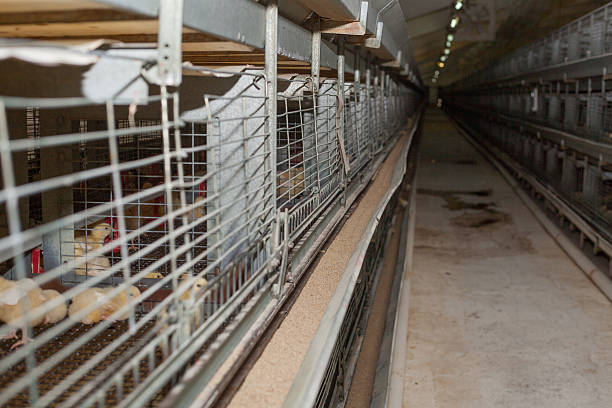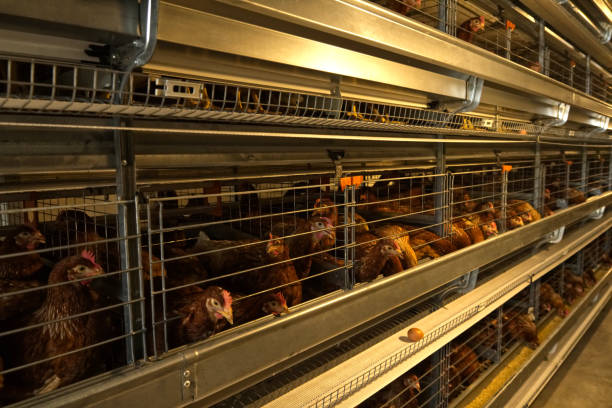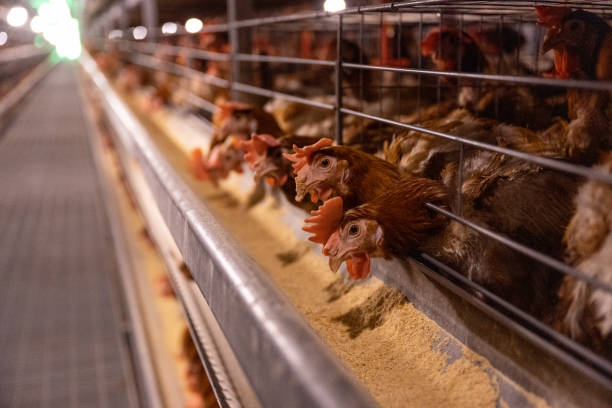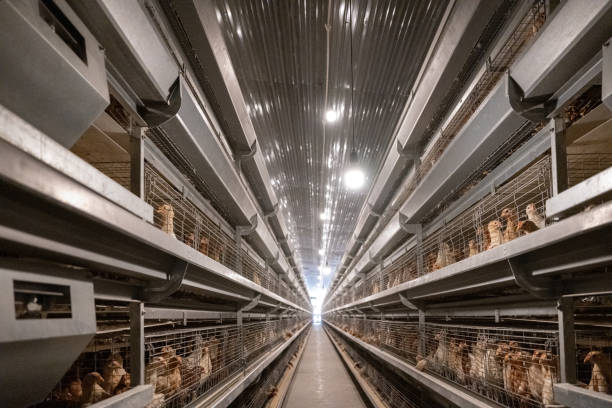
Building a Successful Chicken Farm: Key Steps to Get Started
Building a Successful Chicken Farm: Key Steps to Get Started
If you’re considering stepping into the poultry industry, chicken farming—whether it’s egg production or meat production—has proven to be a rewarding and profitable venture for many around the globe. With a growing demand for poultry products and advancements in farming technology, now is a great time to start. However, like any agricultural business, building a successful chicken farm requires careful planning, smart investments, and continuous learning. This article will guide you through the essential steps to get started, from researching the market to setting up state-of-the-art chicken cages.
Understanding the Poultry Industry Landscape
Before diving into the operational details, it’s crucial to familiarize yourself with the current trends in the poultry industry. Are you leaning toward egg production (laying hens) or meat production (broilers)? Each has its own set of considerations in terms of feed requirements, infrastructure, and market dynamics. A quick analysis of the local and regional demand for eggs or chicken meat will help you make informed decisions about the direction of your farm.
Understanding your target market is also vital. Are you aiming to sell your products directly to consumers, small-scale retailers, or are you looking to supply to larger distributors or processing plants? Each market segment has different expectations in terms of quality, packaging, and certification, so identifying your customer base early on will influence many of your business planning decisions.
Developing a Strong Business Plan
A solid business plan serves as the foundation of any successful venture. It not only outlines your goals but also functions as a roadmap, showing you how to achieve them. Your business plan should include a market analysis, projected start-up and operational costs, income projections, staffing requirements, and a timeline for reaching profitability.
One of the biggest expenses in setting up a chicken farm involves acquiring quality chicken cages. Whether you’re raising laying hens or broilers, the cage system you choose affects bird welfare, productivity, and overall efficiency. It’s wise to choose durable, space-efficient, and easy-to-maintain poultry equipment that promotes healthy living conditions and simplifies daily tasks.
When planning your finances, remember to account for both short-term and long-term investments. Equipment costs, building or land acquisition, feed expenses, and labor costs are just the tip of the iceberg. It’s wise to build a financial buffer into your projections to handle unexpected costs or fluctuations in the market.
Choosing the Right Farm Location
Location plays a key role in the success of a chicken farm. Factors such as accessibility, availability of feed supply, proximity to markets, and biosecurity requirements must be considered. Ideally, the location should be far enough from residential areas to limit odor and noise complaints but accessible enough for transportation and distribution.
Proper zoning and compliance with local regulations are also critical. Before purchasing a plot of land or converting an existing property, ensure that poultry farming is allowed in the area. Some regions may require special permits or have restrictions on waste management practices that must be adhered to.
Constructing or Retrofitting the Chicken House
A well-constructed chicken house is essential for protecting your birds from environmental conditions, predators, and diseases. The design of the house should optimize space while maintaining good ventilation and lighting. Depending on the climate, you may also need to incorporate cooling or heating systems to keep the internal environment consistent.

For laying farms or meat production, laying chicken cages or broiler cages offer an efficient and organized way to house your birds. These cages come in various designs and sizes and can be customized according to your operation’s needs. Investing in high-quality, corrosion-resistant equipment will reduce long-term maintenance and replacement costs.
The floor type, waste management system, and ease of access for cleaning and feeding are important considerations when designing the housing system. Automated systems for feeding, watering, and manure removal can greatly reduce labor costs and increase efficiency.
Selecting the Right Breeds
Selecting the appropriate chicken breed is another crucial decision. Broiler breeds are bred for rapid growth and high meat yield, while laying hens are chosen for their consistent egg production. Research the available breeds and consult with experts or local agricultural extension offices to find out which breeds perform best in your region.

When sourcing your birds, ensure they come from accredited hatcheries that provide healthy, disease-free stock. Establish a good relationship with reliable suppliers to maintain a consistent source of quality birds as your operation expands.
Setting Up a Nutritional Feeding Program
Nutrition plays a significant role in the growth and productivity of your poultry. Working with a certified animal nutritionist or feed supplier will help you create a balanced feeding program tailored to the specific needs of your birds.
Broiler chickens require high-protein diets to support rapid development, while laying hens need a steady supply of calcium and other minerals to produce strong eggs. Feed should be fresh, properly stored, and available at all times. Implementing an automated feeding system can help maintain consistency and reduce labor requirements.
Monitoring feed consumption and adjusting portions based on bird age and growth stages will optimize efficiency and minimize waste. Regularly testing water quality is also important, as clean, accessible water is vital for bird health and performance.
Ensuring Biosecurity and Health Management
Maintaining high standards of biosecurity is essential to preventing disease outbreaks in your flock. Disease prevention measures not only protect your birds but also protect your investment and ensure food safety standards are met.
Implement strict biosecurity protocols such as limiting visitors, disinfecting boots and equipment before entering the coop, and ensuring that feed and water sources are protected from contamination. Workers should be trained in identifying signs of illness in birds and understand the importance of reporting concerns immediately.
Vaccination programs, routine health inspections, and working closely with a qualified poultry veterinarian are key aspects of proactive health management. Regular sanitation and cleaning of the chicken house and equipment help reduce disease risks and maintain a healthy living environment.
Acquiring the Right Equipment and Technology
Modern poultry farming relies heavily on technology to monitor and optimize operations. Automated systems such as feeding and watering equipment, ventilation control units, and manure removal systems allow for more precise management and consistent results.
Egg farms benefit greatly from using modern laying hen cage systems, which can improve productivity and reduce labor inputs. Similarly, broiler farms can enjoy enhanced growth rates and lower mortality with properly designed and ventilated broiler cages.
Investing in durable, easy-to-clean cages designed for specific types of poultry is a decision that pays off in the long run. These systems often include features that facilitate egg collection (for laying hens), waste management, and climate control, which are especially valuable in large-scale operations.
Staffing and Training
Even the most advanced farm depends on knowledgeable and responsible personnel. Hiring and training a reliable team, especially those trained in biosecurity, health monitoring, and equipment operation, is vital to maintaining a successful chicken farm.

Regular staff meetings and training sessions help ensure that everyone is up to date on farm protocols and new industry practices. Encouraging feedback and problem-solving from the team contributes to a culture of continuous improvement.
Building a Brand and Marketing Strategy
While your chickens may do most of the work, effective marketing ensures your products reach the right audience. Branding isn’t just for trendy startups; it gives your products identity and sets them apart from competitors.
Whether you’re a small farmer selling locally or a large-scale producer supplying regional markets, having a clear marketing plan is important. Focus on storytelling, sustainability practices, and transparency in your operations to meet growing consumer demand for traceable and responsibly produced poultry products.
Using digital platforms—such as social media, websites, or agricultural marketplaces—can also expand your reach beyond local markets. Partnering with restaurants, schools, or grocery stores may offer a consistent stream of income, while farmers’ markets or direct-to-consumer online sales can add flexibility and premium pricing opportunities.
Navigating Regulations and Sustainability
Compliance with government standards and local regulations ensures not only legal operation but also consumer trust. Regulations around waste disposal, bird welfare, and product handling vary from region to region, so it’s important to stay informed and engaged with regulatory bodies.
Sustainability practices, such as implementing manure management systems, reducing water usage, or repurposing waste as organic fertilizer, not only lower environmental impact but can also save on costs. In today’s market, environmentally conscious operations often have a competitive edge.
Monitoring and Improving Performance
Once the farm is up and running, ongoing monitoring and evaluation are crucial for long-term success. Use technology or farm management software to track key performance indicators such as feed conversion ratios, mortality rates, egg production per bird, or weight gain in broilers.
Keep detailed records of every aspect of your poultry operation—feeding schedules, vaccination plans, sales, and expenses. These records will provide valuable insights for adjusting your management practices, improving productivity, and making data-driven decisions.
Building a Network and Seeking Mentorship
Entering the poultry farming industry doesn’t mean doing it all alone. Joining local or international associations, attending poultry farming workshops, and connecting with experienced farmers can provide invaluable information and support.
Engaging with professionals in the poultry equipment industry, such as companies offering laying chicken cages or broiler cages, can also help you make informed purchasing decisions and access innovative products.
Learning from Setbacks
Every farmer faces challenges—weather issues, disease outbreaks, equipment malfunctions, or fluctuating market prices—but how you respond to these setbacks determines your farm’s resilience. Always keep learning from your experiences and adapting your strategy.
Remember, even the most successful chicken farms began with small, strategic steps. Start smart, invest wisely, and continuously improve, and your poultry farm can become a thriving part of the agricultural landscape.
Starting a chicken farm is more than raising birds—it’s about building a sustainable business that supports your goals, nourishes your community, and contributes to the global food system. With dedication, careful planning, and the right equipment such as modern laying or broiler chicken cages, your vision of a successful farm can become a reality.
